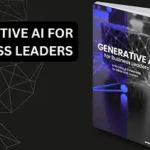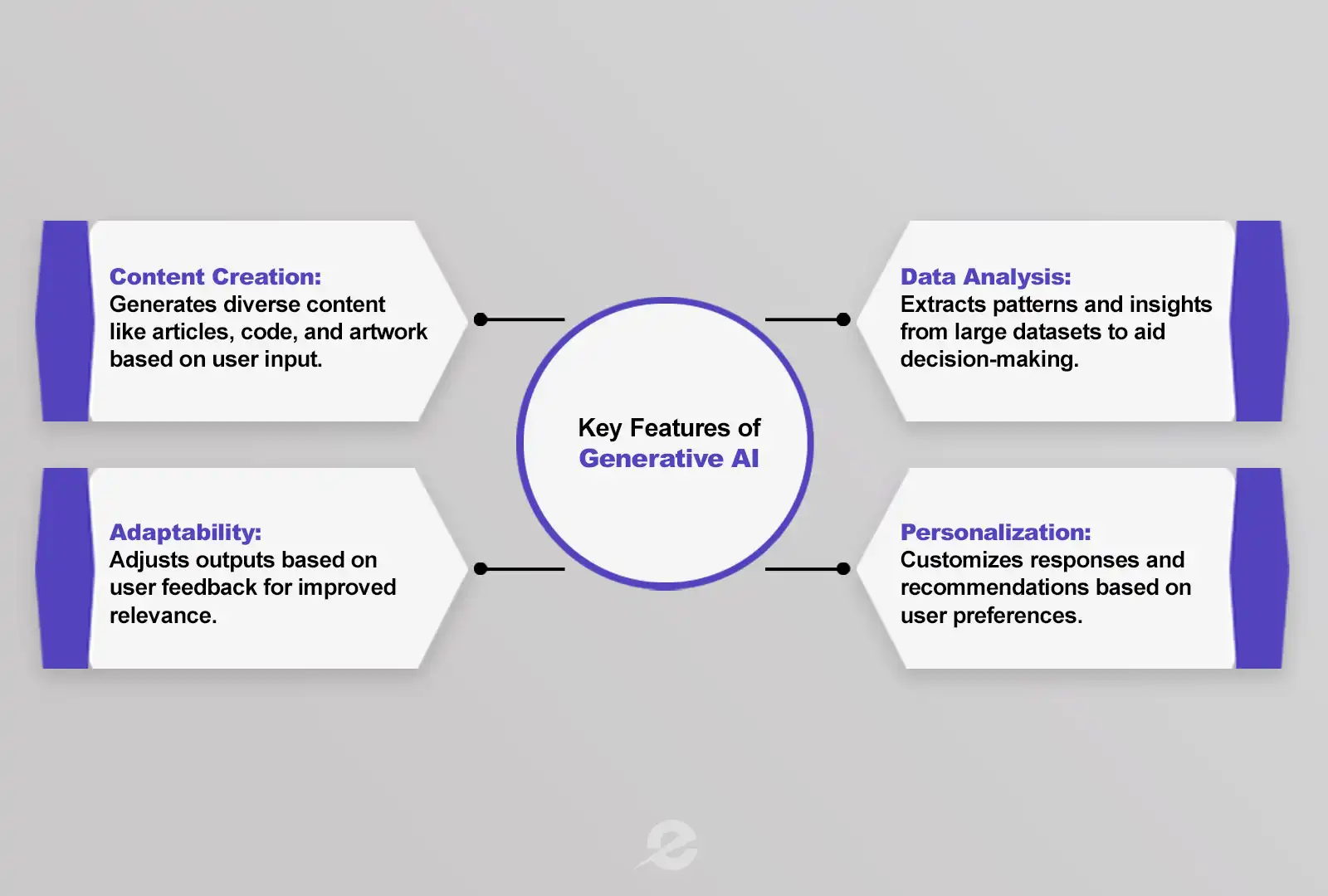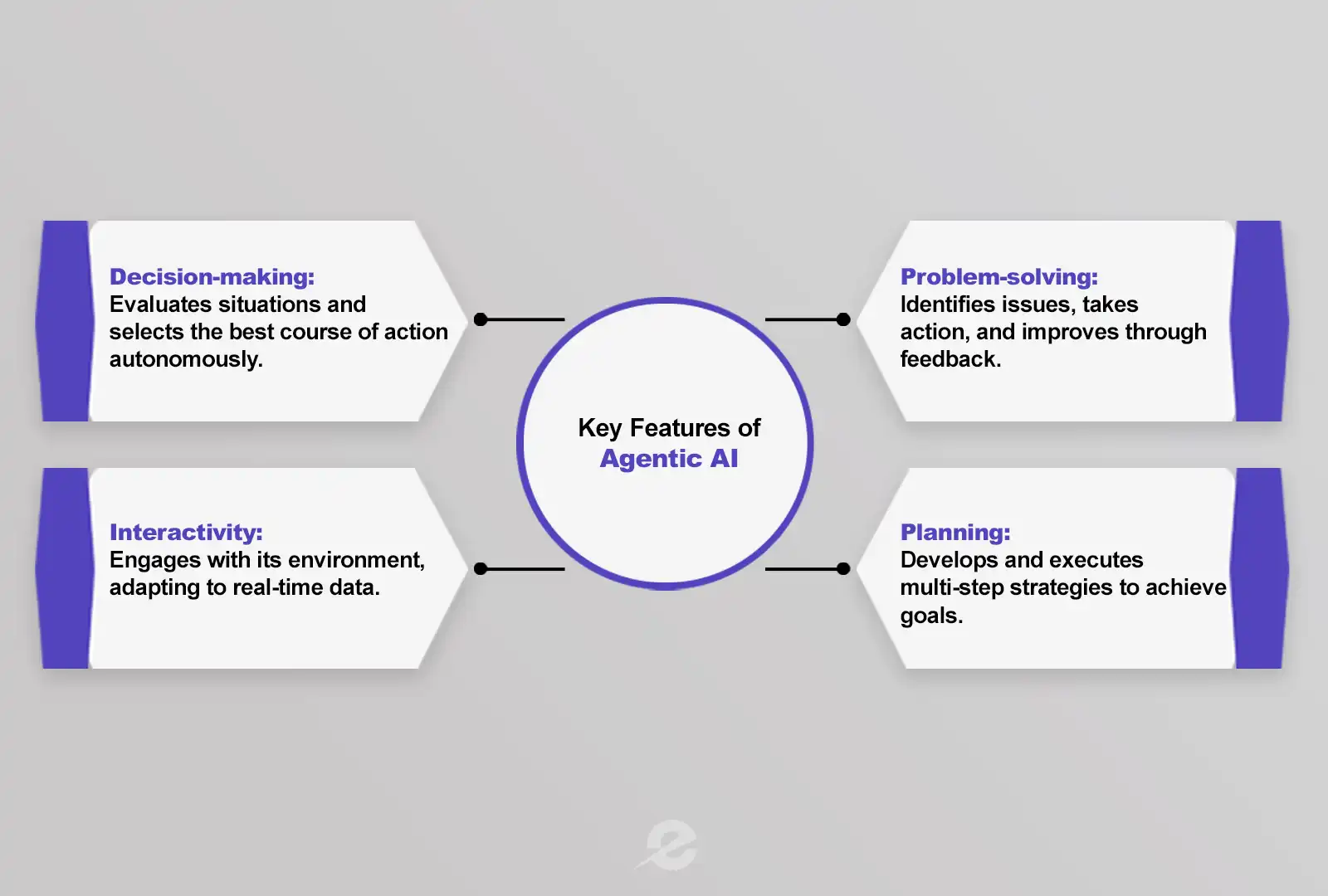There has already been sufficient discussion of generative AI and the use cases it continues to serve. At the same time, next-gen AI is gradually taking the wheel and setting the course of automation technologies.
Yes, Agentic AI is the next big thing in AI research. In fact, according to Capgemini, the market value of agentic artificial intelligence stood at $5.1 billion in 2024 and is expected to reach $47 billion by 2030.
This massive growth will undoubtedly bring significant differences from its predecessor, Gen AI. Hence, the Agentic AI vs. Generative AI debate is worth discussing. In this blog, we’ll also understand what is Agentic AI, why business leaders are serious about pursuing it, and how they can successfully implement it in their operations and processes.
What is Agentic AI?
Agentic AI, or autonomous AI, is an advanced artificial intelligence that analyzes data, sets goals, and performs actions on behalf of the user. A more sophisticated, next-gen version of Gen AI, it uses machine learning, large language models (LLMs), and natural language processing (NLP) to facilitate autonomous decision-making and execution without requiring consistent human input.
Agentic systems understand the user’s objectives and the context of the problem and take action accordingly. While it uses the creative capabilities of generative AI models like ChatGPT, Agentic AI differs in several ways.
First, its main focus is on decision-making rather than content creation. Second, it doesn’t rely on human prompts; it is programmed to optimize specific goals or objectives, such as increasing sales, improving customer satisfaction, or enhancing supply-chain efficiency. Third, unlike Generative AI, Agentic AI can execute complex sequences of tasks, autonomously access databases, or initiate workflows to accomplish its objectives.
Why Agentic AI is the Next Big Thing You Can’t Ignore?
Agentic technologies could not only help you make the right decisions for your business but actually make those decisions for you. Here are four reasons why businesses should start taking autonomous AI seriously.
1. Leverage flexibility and precision
One of the most accomplished distinctions of Agentic AI is how it combines the creative and adaptive features of LLMs and the accuracy and reliability of traditional programming. LLMs, the foundations of Agentic tech, can easily comprehend natural language, making it easy for users to interact with AI without demanding technical expertise.
They can manage complex, context-reliant jobs and produce creative solutions, a feat traditional programming struggles with. Second, traditional programming is highly structured and precise, making it perfect for repeatable tasks that require accuracy, like financial calculations or system security.
Agentic AI bridges the gap between both strengths. This hybrid approach makes it adaptable to new situations and data while ensuring critical processes are handled accurately.
Let’s suppose Agentic AI powers a customer service system. Simple agents could handle checking order status and other routine queries, while more sophisticated agents could analyze customer feedback to improve service over time. Moreover, a learning agent might even predict customer issues before they arise, proactively offering solutions.
2. Simplify workflows with intuitive AI
Autonomous AI makes it easier for your workforce to collaborate with technology via natural language without needing complex software interfaces. This is particularly useful for business functions currently managed with SaaS products, which could be enhanced by agentic systems.
For example, instead of navigating back and forth multiple dashboards to analyze sales data, a sales leader could simply ask an agentic AI, “What were our best-performing products last year?” The agent would retrieve the data, analyze the findings, and present them in an understandable format.
If you’re one of those leaders who aren’t exactly happy with generative AI, agentic systems could offer you a practical way to integrate AI into everyday operations. While monolithic LLMs are impressive, their use cases in enterprise settings are limited. On the other hand, Agentic AI connects state-of-the-art AI capabilities and real-world business needs, making way for a more AI-driven future.
3. Expand capabilities with real-time data
Although LLMs are powerful, they are still intensely data-dependent. They can’t access real-time information or interact with external systems on their own. However, autonomous AI can actively gather new data, interact with tools, and monitor systems in real-time.
An Agentic system in a retail business could track inventory levels by connecting to IoT sensors in warehouses, examine sales trends using data from ecommerce platforms, and even change marketing strategies based on real-time customer behavior. Such abilities to access and process raw data give Agentic AI a clinical edge over standalone LLMs.
4. Empower autonomy for seamless operations
Agentic AI’s ability to perform complex tasks without constant human supervision makes it ideal for dynamic environments where continuous operation is needed.
For example, a cybersecurity service provider could use autonomous AI to monitor networks 24/7, detect unusual activity, and automatically respond to potential threats by isolating affected systems or employing countermeasures. In human resources, it could manage entire recruitment processes by screening resumes, scheduling interviews, and even evaluating candidate responses to find the right fit.
This autonomous tendency enables CEOs and top-level executives to streamline operations, focus on strategic-level decision-making, and let Agentic AI handle the burden of day-to-day tasks.
Agentic AI vs. Generative AI: Key Features
Although both come from the same family, they have distinct goals and attributes that give them their own identities. Let’s explore the key features of agentic AI vs. generative AI.
Key Features of Generative AI
Content generation
Generative AI excels at creating different types of content assets, such as articles, code, or even creative works like poetry and art. For example, tools like DeepSeek R1 can generate detailed answers to complex questions, write step-by-step guides, or even create code snippets for developers.
Data analysis
Data scientists can analyze large datasets to uncover patterns, trends, and insights. For example, a logistics company uses generative AI to analyze shipment data, identify hold-ups in the supply chain, and recommend workarounds to reduce delivery times.
Adaptability
Generative AI can alter its output based on user prompts and feedback. If a user provides specific instructions or corrections, the AI accommodates its responses to better align with their needs. Consider a designer using DALL-E to create a logo. After receiving feedback that the design is too vintage, the tool will adjust its output to produce a more modern style, depending on the follow-up instructions provided.
Personalization
Generative AI can deliver highly personalized experiences by analyzing user preferences and behaviors. For example, an ecommerce platform uses Gen AI to suggest products based on a customer’s browsing history.
Key Features of Agentic AI
Decision-making
Agentic AI makes decisions based on predefined objectives, assesses situations, and determines the best action plan with minimal human intervention. For example, an Agentic AI system analyzes patient data and suggests personalized treatment plans, helping healthcare professionals make more informed decisions.
Problem-solving
Agentic AI gathers data, analyzes it, takes action, and improves with time through feedback. The technology follows a structured procedure to perceive, reason, act, and learn. A manufacturing plant using artificial intelligence can detect a machine malfunction, diagnose the issue, and automatically schedule maintenance to prevent downtime.
Interactivity
Agentic AI can interact with its environment, gathering real-time data and modifying its actions accordingly. Consider a software development team: Agentic AI could act as a smart project assistant that monitors code commitments, tracks project updates, and suggests optimizations in real-time.
Planning
Autonomous-driven tools can understand and manage complex scenarios by implementing multi-step strategies to achieve specific goals. Suppose a logistics company uses Agentic AI to plan delivery routes. The tool will recommend improvements and backup plans for traffic and weather inconveniences and fuel efficiency to assist with timely deliveries.
How Can Business Leaders Successfully Implement Agentic AI
Implementing Agentic AI in your business might sound similar to Gen AI, considering the bottom-line similarities from the agentic AI vs. generative AI debate. However, the case is otherwise due to the latter’s more strategic-driven approach. Here are the steps that business leaders need to take to incorporate Agentic AI into their organizations.
1. Define clear objectives
Start with the basics. Leaders must first identify specific business problems or opportunities the technology can solve before investing in Agentic AI. For example, if you want your retail company to optimize inventory management and reduce stockouts and overstock situations by 20%, you have a clear objective on paper. The purpose is to deliver measurable value.
2. Invest in the right infrastructure
Business leaders and technical executives must understand that Agentic AI relies on robust data infrastructure, including databases, APIs, and cloud platforms, to function effectively. Hence, investing in the right tech stack and systems is important to support AI operations effectively.
3. Build a data-driven culture
Agentic AI works well with high-quality, well-organized data. Leaders should encourage a culture of data literacy and see that their teams are equipped to collect, manage, and analyze data. A healthcare services provider is required to train its staff to input patient data accurately into electronic health records; the agentic AI system will need quality data to make reliable treatment recommendations.
4. Collaborate with AI experts
Partnering with AI specialists or technology partners is a wise move, especially for businesses wanting to design and deploy custom AI systems tailored to their needs. Relevant professionals and consultants can guide you in selecting the right technologies and how to integrate AI into existing workflows without affecting your business operations.
5. Ensure ethical and responsible AI use
It doesn’t matter if you opt for Gen AI, Agentic AI, or automation solutions; establishing guidelines for transparency, fairness, and accountability is non-negotiable. Ethical AI use also includes addressing potential biases in AI decision-making and ensuring compliance with industry regulations. For example, a financial institution adds ethics compliance to ensure its AI system doesn’t discriminate against loan applicants based on gender, ethnicity, or any other societal class variables.
Handpicked content: The Ethical Path to AI Success for Business Leaders
6. Start small and scale gradually
Implementing agentic AI isn’t as simple as releasing a minor update of your product. It’s better to start with a pilot project in a specific department before scaling across other departments or teams. Once the system or process proves successful and displays potential, you can safely start scaling it to different use cases in your company. Suppose a retailer experiments agentic AI in one store to optimize shelf stocking. After registering a 10% improvement in efficiency, the company will roll out the system to all other branches across different locations.
7. Monitor and optimize performance
Collect feedback from end users (both internal and external), analyze performance metrics, and make adjustments accordingly. The purpose of post-implementation monitoring is to determine whether your AI solutions are meeting your business objectives.
Is Agentic AI the Future?
The answer is debatable at the moment! However, next-gen AI indeed promises enhanced autonomy and efficiency, adaptability to dynamic environments, seamless integration with different technologies, the tendency to solve real-world problems, and the ability to drive business value.
Second, businesses should essentially realize the key elements in the Agentic AI vs. Generative AI discussion and carefully decide which tools and technologies serve their purpose.
Last, in addition to the above implementation tips, business leaders should be mindful of communicating the benefits of Agentic AI to stakeholders and preparing for long-term evolution if they wish to stay at the forefront of innovation and consider Agentic artificial intelligence their organization’s future.
Read More: 6 Most Powerful AI Platforms for Businesses: Intelligence and Use Cases












